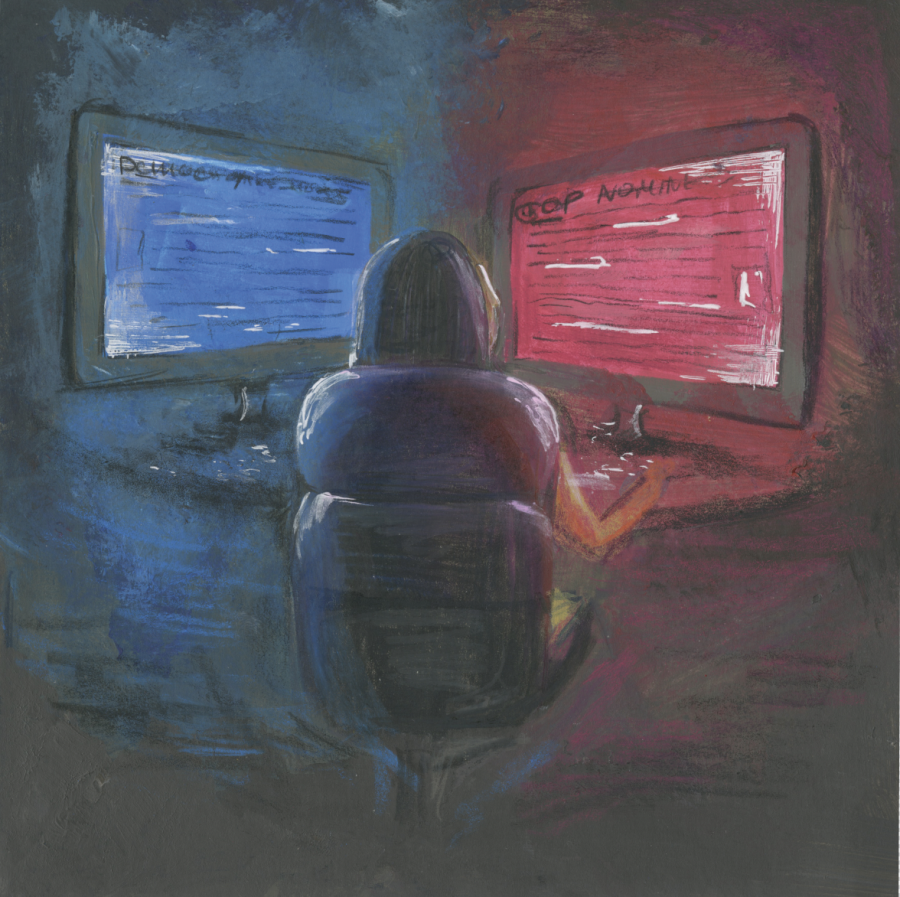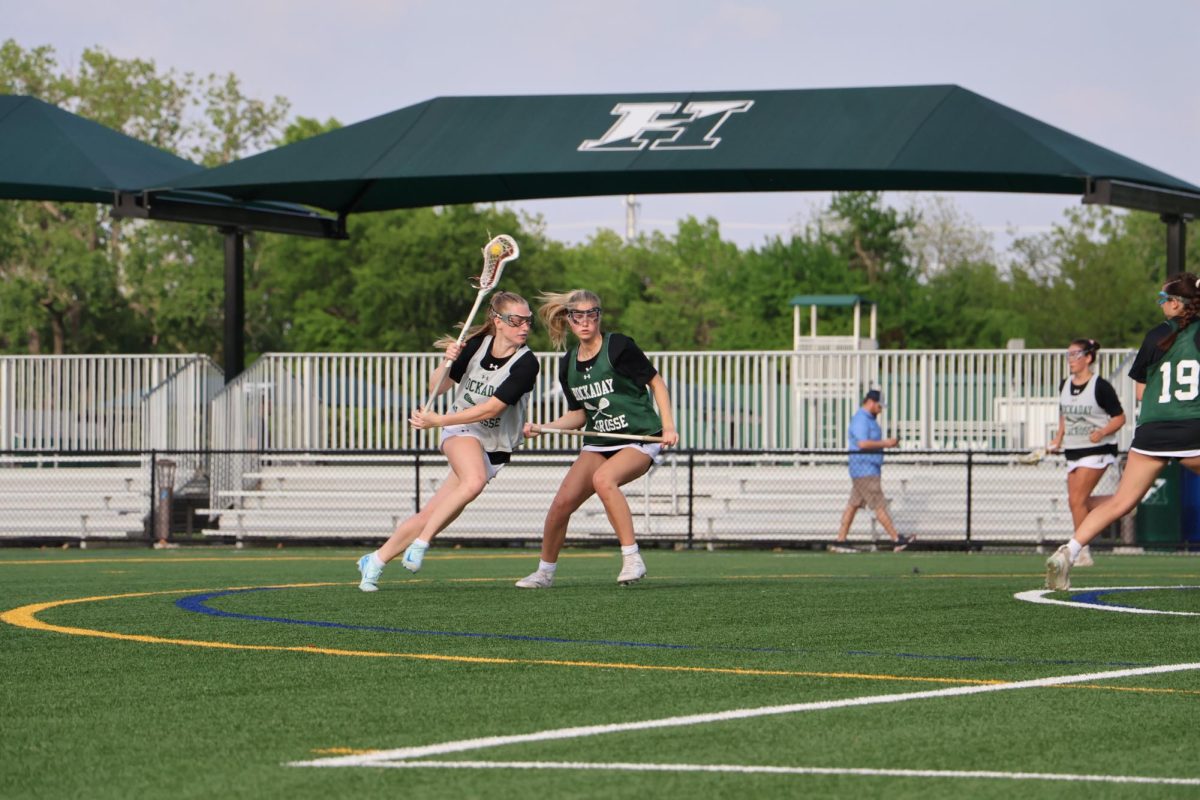Consider the source
For teenagers looking to get involved with politics, media literacy is essential to making informed decisions. But the challenge is understanding what sources to consult when trying to form educated opinions.
November 8, 2022
Biased sources perpetuate unconscious bias, because they ensure that childrens’ frame of reference for media and understanding of the world depends on what their parents relay from chosen news sources. Media Literacy Now, an organization dedicated to educating children on how to properly interpret media, combats this idea. Media Literacy Now covers a wide spectrum of media, advocating themes from understanding body image to encouraging global involvement. Their mission is to “decode media messages,” “assess the influence of those messages on thoughts, feelings, and behaviors” and “create media thoughtfully.”
WHAT IS MEDIA LITERACY
The turn of the century brought about the rise of the Internet and social media. With this change came a shift in how humans began to perceive, understand and engage with the world around them. In 1995, 14% of U.S. adults had internet access. Yet today, internet usage soars as over 8 in 10 Americans receive their news from online sources, according to the Pew Research Center. Furthermore, over 40% of Americans aged 18-29 read the news through social media in 2020. For teenagers, this number is even higher: a 2019 study conducted by Common Sense Media showed that around 54% of teenagers learn about the news through social media.
This rise in social media reporting is understandable, considering the unparalleled access to technology that we have today; however, many Americans do not understand how to use social media or interpret the news properly. Biased broadcasters and unreputable sources are largely responsible for the spike in misinformation. The ability to think critically and analyze media is crucial to making responsible, informed decisions.
Media literacy is a framework for analyzing and interpreting information from various sources of media, a skill necessary in identifying bias and making informed decisions.
Media, especially political media, is often biased towards one party or the other. Regardless of whether it is an advertisement for a gubernatorial candidate or a segment from FOX News, political media contains bias. It is nearly impossible to consume media from a completely unbiased source, which is why it’s important to consume responsibly. Teens, more heavily involved in politics and social justice movements in recent years, are exceptionally vulnerable to political misinformation through social media outlets, making it imperative for them to gain skills on how to discern fact from fiction.
UNDERSTANDING MEDIA IN THE 21ST CENTURY:
According to Pew Research Center, about 93% of Americans are digitally connected, providing a vast audience for outlets like Instagram, TikTok and Twitter. The digital media age has allowed various news outlets to connect with this audience through such social media platforms. Reputable sources such as The Washington Post and BBC have active TikTok accounts, while The New York Times and The Guardian have cultivated millions of followers on Instagram- yet both are suffocated by fake news, which surrounds them on all sides.
Fake news purposefully spreads disinformation, information that is deliberately biased and aimed to manipulate the audience. Disinformation often comes in the form of satirical websites like The Onion and The Babylon Bee. Although these media outlets aren’t intended to deceive, they can be harmful if viewers are unable to differentiate between satire and actual news.
Sara Stoltz, Director of Communications at Hockaday, believes that, while social media has its perks, its dangers in the spread of misinformation are widespread.
“The biggest change is social media and just the dissemination of information: it’s so much quicker, and there’s so many more platforms and that the idea that everybody has a voice is great in theory, but it also amplifies a lot of voices that don’t have credibility, and it’s easier to spread disinformation,” Stoltz said.
Disinformation and misinformation are especially rampant during times of elections, especially in the age of social media. Users leaning towards one side of the political spectrum will find their personalized Instagram or Twitter feeds stuck in an ‘echo chamber’ of information. The same ideas are repeated and radicalized, and exposure to the other side of the story takes effort to find.
Even those voters who are not radically left or right can be affected by this; because the Instagram or TikTok algorithm uses past likes to determine what content shows up on your For You page, content related to even just one video a user liked in the past can pop back up hundreds of times.
Within these outlets, digital and visual media captivates naïve users. Two-thirds of 3,446 American students in a 2019 Stanford study could not discern the differences of news and ads on Slate Magazine’s website. However, they decided credibility based on graphic design, reinforcing the influence of visual media and the need for media literacy.
Dr. Tom Johnson, a University of Texas at Austin professor, discussed this phenomenon of social media campaigning in a recent interview with the Texas Orator.
He described that TikTok is also a prominent media source for advancing misinformation due to its highly visual and emotional components, appealing to teens.
“Anger and fear in particular can really mobilize people’s actions,” Johnson said. “Republicans are much better at this visual propaganda than Democrats.”
INTERPRETING MEDIA
Having media literacy is easier said than done. In the words of Alan C. Miller, New Literacy Project’s CEO, “While students may be digital natives…they are by no means well-equipped to navigate the incredibly fraught information landscape that they have inherited.”
For many, it is a lifelong struggle to do this as sources and biases continue to shift, but the first step is understanding bias. The AllSides Media Bias Chart is an excellent place to begin when looking for reliable sources. Although most news outlets tend to report factual information, oftentimes some facts may be snubbed in favor of a political ideology. News sources such as CNN, the New York Times and MSNBC tend to lean left, while others like FOX News, Daily Mail and the Washington Times lean right. Neutral sources such as Reuters, BBC and the Wall Street Journal are more reliable for just-the-facts reporting. To form an educated opinion, it is crucial to diversify media intake and make individual decisions, rather than following what an anchor says.
Additionally, it’s important to only use reputable sources. These include official broadcasts and newspapers, but they can also include platforms on TikTok and Instagram. Many organizations will link their sources after their post so that viewers can consult the original material. When consuming secondary sources, it is beneficial to read the original sources to check for bias.
AUTHOR’S VIEW ON MEDIA LITERACY IN TEXAS
Although Media Literacy Now places Texas third most successful out of 14 states with media literacy laws for students, the state still needs a great amount of change. In 2019, Texas passed two laws championing media literacy or “digital citizenship.” The Texas codes and expansion on media literacy focus heavily on bullying and other online dangers, as well as regulate teacher training on civics education. However, they also prohibit teachers from educating on certain topics, limiting free speech. One example is the 1619 Project, a project regarding race by the New York Times.
Manifested through these laws, Texas is reluctant to enforce educational regulations and allow politicized conversations in schools. In order to make students truly literate in media and allow the integration of the next generation into democracy, Texas must expand its educational goals around media literacy. Educating on some seemingly “controversial” issues, especially concerning race, and implementing unbiased curriculums will deconstruct the systemic echo chamber students are trapped in outside of the classroom. Whether this escape be from parents or social media algorithms, true media literacy education without limitations will provide students with a range in news sources and diversity of thought.
However, Texas’ legislators have advanced their own agenda above media literacy standards. Their censorship extinguishes the circulation of opinions and prevents students from determining what they believe and how to analyze all types of information.
Fortunately at Hockaday, students have the ability to learn how to look for credible sources through research-heavy assignments like the Junior Research Paper.
“What Hockaday does really well is developing those critical thinking skills,” Stoltz said.
Techniques gained at Hockaday, like critical thinking through context and the consultation of multiple outlets to verify the news, can be used outside of Hockaday in the upcoming elections.
“I think it’s really important to listen to what candidates are actually saying and also their voting records. And also who’s giving them money. So you can look up a lot about your local candidates. You can also ask them questions, you can email them directly,” Stoltz said.
If one has doubts regarding news on candidates or a candidate’s previous political actions, using primary sources, as Stoltz mentioned, is a worthwhile way to practice media literacy.







